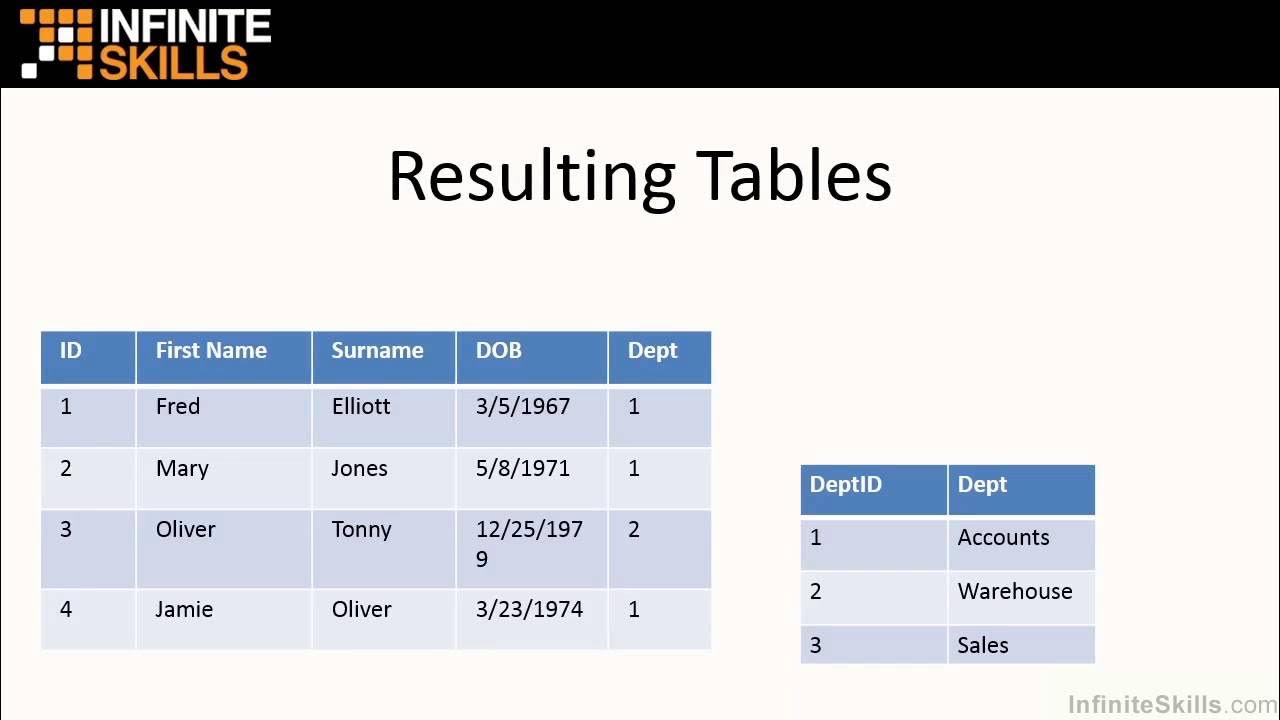Relacional Remocoes Operacoes
Summary
TLDRThe transcript discusses the intricacies of referential integrity within relational databases, focusing on how relationships between tables can influence data management. It outlines three options for handling deletions: blocking, cascading, and replacing references with null values. Through practical examples involving employees, departments, and locations, the speaker emphasizes the importance of maintaining data integrity while performing operations such as insertion, deletion, and updates. The discussion further highlights the challenges of ensuring valid foreign key relationships and the consequences of violating these constraints, offering insights into effective database management practices.
Takeaways
- 😀 Referential integrity is crucial in databases, ensuring that relationships between tables remain consistent.
- 🔄 When a record in a primary table is deleted, various strategies can be employed to maintain referential integrity.
- ❌ One option is to block the removal of records if related data exists, preventing orphaned entries.
- 🔗 Another strategy is to propagate the deletion, removing all related entries across the database.
- 🔄 Alternatively, replacing references to a deleted record with a null value is a possible approach.
- 👥 The example of employees and supervisors illustrates how foreign keys link tables and the implications of deleting a supervisor.
- 🏢 When removing departments, care must be taken to avoid deleting all associated employees, which can disrupt business operations.
- 📊 Updates to existing records must also consider referential integrity, as changes can violate constraints if not handled correctly.
- 🔒 Attempting to insert or update records that conflict with existing keys can lead to integrity violations, requiring validation.
- ✅ It's essential to implement checks to prevent operations that would compromise data integrity during insertions and deletions.
Q & A
What is referential integrity in databases?
-Referential integrity is a property of a relational database that ensures relationships between tables remain consistent. It guarantees that a foreign key value in one table always points to a valid primary key value in another table.
What are the three options for handling deletions in referential integrity?
-The three options for handling deletions are: 1) Block, which prevents deletion if there are dependent records; 2) Propagate, which removes all dependent records when the referenced record is deleted; 3) Replace, which substitutes the foreign key with a null value or another valid reference.
What does the 'Block' option entail when deleting records?
-The 'Block' option prevents the deletion of a record if there are dependent records that reference it. For example, if an employee has a department assigned, the department cannot be deleted until the employee is reassigned.
How does the 'Propagate' option work during a deletion?
-The 'Propagate' option allows for the deletion of a record and also automatically deletes all records that reference it. For instance, if a department is deleted, all employees belonging to that department will also be removed.
Can you provide an example of the 'Replace' option in referential integrity?
-An example of the 'Replace' option is when a supervisor is removed from the employee records. Instead of deleting the employees, their supervisor field can be set to null or updated to a different valid supervisor.
What implications does deleting a primary record have on related foreign keys?
-Deleting a primary record can lead to violations of referential integrity if there are foreign keys referencing that record. Depending on the defined strategy (Block, Propagate, Replace), actions must be taken to maintain integrity.
What must be ensured when performing updates on foreign keys?
-When updating foreign keys, it must be ensured that the new foreign key value exists in the referenced primary table. If it doesn't exist, the update will be rejected to maintain referential integrity.
Why is it essential to manage referential integrity in a database?
-Managing referential integrity is essential to prevent data inconsistencies, maintain reliable relationships between tables, and ensure the accuracy and reliability of the data stored in the database.
What happens if an insertion violates the referential integrity constraints?
-If an insertion violates referential integrity constraints, such as attempting to insert a foreign key that does not exist in the primary table, the insertion will be rejected, and an error will be returned.
How does the concept of referential integrity relate to business logic?
-Referential integrity supports business logic by ensuring that relationships between entities (like employees and departments) reflect real-world constraints and relationships, thus maintaining the integrity of business processes and data analysis.
Outlines

هذا القسم متوفر فقط للمشتركين. يرجى الترقية للوصول إلى هذه الميزة.
قم بالترقية الآنMindmap

هذا القسم متوفر فقط للمشتركين. يرجى الترقية للوصول إلى هذه الميزة.
قم بالترقية الآنKeywords

هذا القسم متوفر فقط للمشتركين. يرجى الترقية للوصول إلى هذه الميزة.
قم بالترقية الآنHighlights

هذا القسم متوفر فقط للمشتركين. يرجى الترقية للوصول إلى هذه الميزة.
قم بالترقية الآنTranscripts

هذا القسم متوفر فقط للمشتركين. يرجى الترقية للوصول إلى هذه الميزة.
قم بالترقية الآنتصفح المزيد من مقاطع الفيديو ذات الصلة
5.0 / 5 (0 votes)






